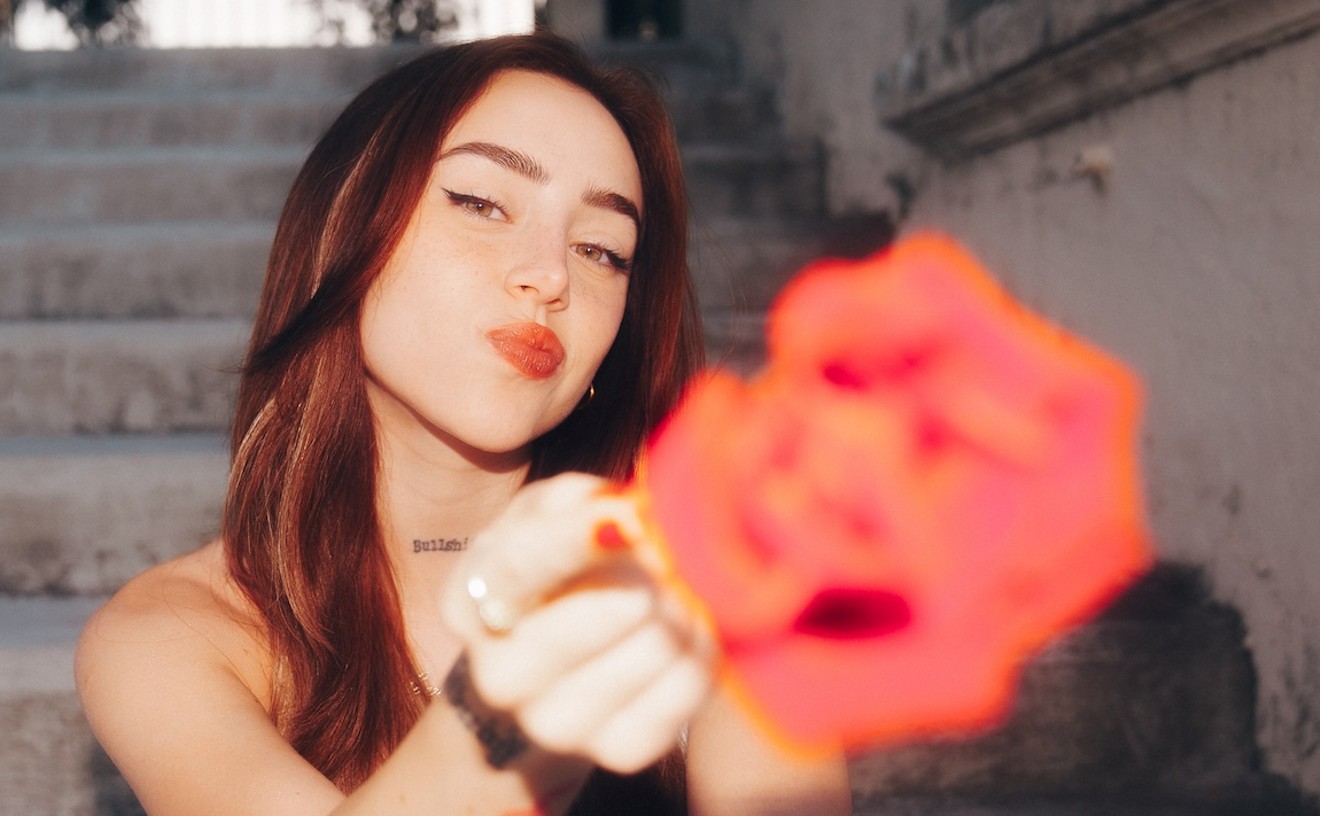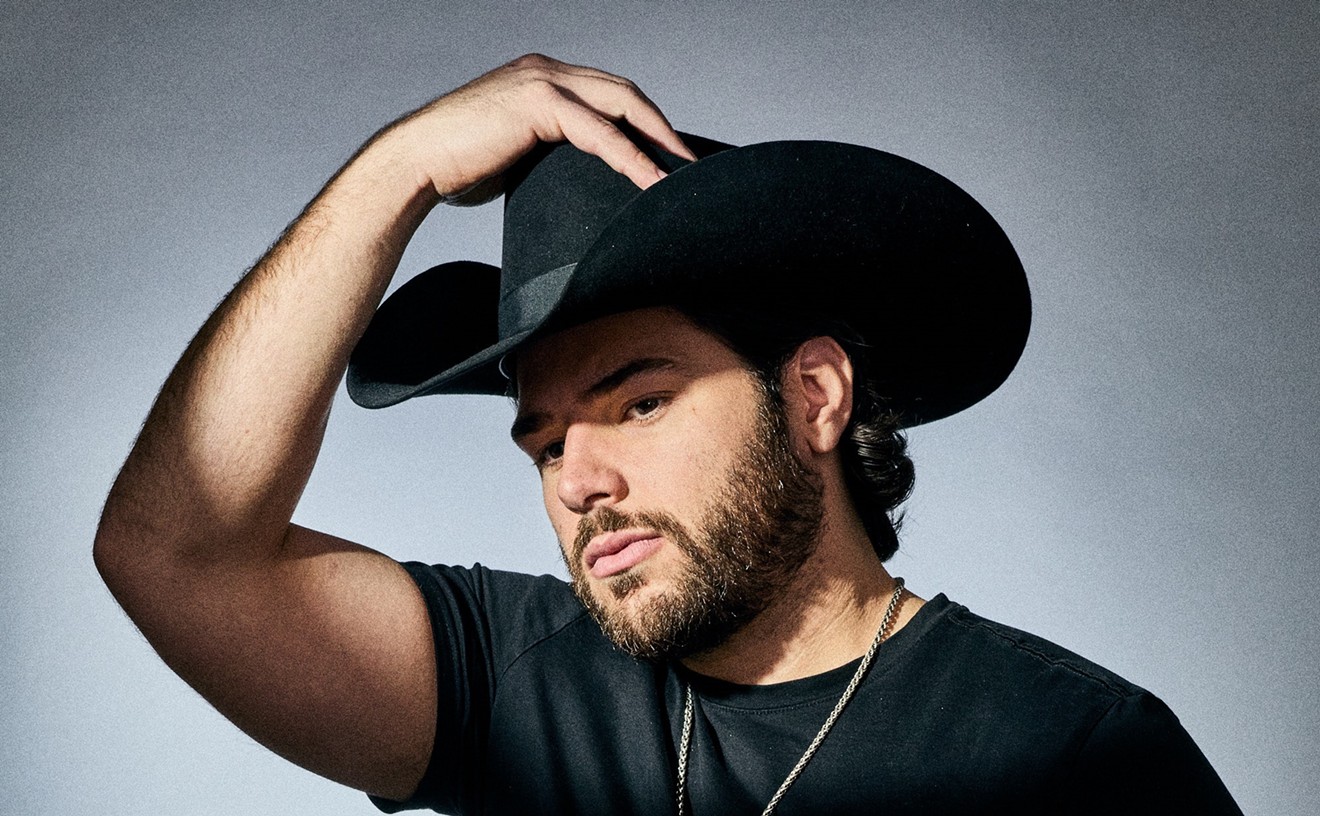"I went to [the after-hours club] Pump and was just shell-shocked," Lindenberger recalls of her introduction to Miami's club scene. "It was outrageous, but in a good way. I remember thinking to myself, 'Someone should document this.'"
It's a few hours before Lindenberger's film Dance Culture in the Mix debuts at the Miami Gay and Lesbian Film Festival, and she and assistant producer Katrine Weiss are relaxing in the shade of the Abbey Hotel's garden. Though now living in Brooklyn, she clearly remembers the initial encounter that led her to deem Miami's nightlife worthy of documentation.
"A lot of people come here for the clubs," she says, mindful that hers is not the first artistic foray into Miami's nightscape. "But for me, the contrast of coming from this natural environment and into South Beach really intrigued me. The first time I saw someone spinning I literally got chills. I had the idea I'd become a DJ too, but the hours kept me from doing it."
Instead with the mentoring of a director friend she set out, over the course of a year, to painstakingly shoot more than 40 hours of the set, props, and characters that make up Miami's dynamic gay club scene. Featuring DJs David Knapp, Victor Calderone, and Danny Tenaglia with local drag queens Kitty Meow and Connie Casserole, among others, the film beats a path through the styles, sounds, and egos that fuel the Beach show.
"It began simply about DJs," she says, "but over the course of shooting I realized there was so much more to the scene here, so I included the drag performers and also considered the crowds and the clubs they go to."
Lindenberger provides a cautiously fresh look at the drama that unfolds as evening simmers and the synthetic bass from the DJ booth pounds a tribal call to thousands of clubbers worldwide. An anonymous promoter opens the film, claiming, "DJs from London to Amsterdam call looking to get a gig in Miami." From there the film sets out to find out why.
"I really wanted to get a good range of the scene here," the filmmaker explains. "I included locals like Bugie [DJ at Twist], the guest DJs who come as part of a circuit, and those who travel to places like Israel and Italy and make a lot of money for one night. What comes out is a montage of nightlife culture: what the DJs offer and what the crowds get out of it. I thought it was important to share in a positive light what South Beach is all about."
Granted the film sidesteps two major elements of club culture that cause heated controversy -- the prevalence of illegal drugs and the association of casual sex with AIDS. Instead Dance Culture focuses simply on the stars hired to entertain amid such conditions. Chemical enhancement and primal desires are givens here, but so are good music and a decadent party.
Through the mix come snapshots and sound bites that sum up the soul of SoBe, a codependent clash of attention-seeking and gratification. With music as the driving force, the camera follows the energy flow through the crowds, measures their reactions, and comes full circle to re-create the pulsating atmosphere.
"During the filming it became more obvious, the control a DJ has over a crowd," says Weiss of the film's underlying theme. "It's almost like an Outward Bound program where this DJ is taking everyone along for a ride. Once you see behind the decks you realize how much more there is to their job."
The cast takes turns explaining their craft, from the struggling days of friends' parties and mix tapes, to the commercial success of monthly crobar residencies and annual circuit parties. Calderone eyes the crowd intently as his voiceover speaks of intuition and timing. Knapp explains his equipment and allegiance to CD technology. Drag performer Power Infinity sums up the whole act as "drawing attention to myself."
"The film kind of shows that need some people have for clubs," Lindenberger says, speaking for both those paid to be there and those paying to get in. "I always loved documentaries and decided to just take a good idea and go for it. We didn't realize what we were getting into."
The same could be said for those on the scene. The catch phrase for clubgoers and DJs has long been "It's all about the music." But as the filmmakers find out, that's not what the authorities think. When ordinance 842-99 rears its silly head ("No dancing, 5:00 to 10:00 a.m., City of Miami Beach"), it becomes obvious how seriously some people take this supposed fantasyland.
"It wouldn't have been good as a filmmaker to not include the drug issue," Lindenberger says of her coverage of the recent City Commission meetings in which the dangers of club drugs were brought before the public. "Everyone knows [drugs are] there, but we tried to show that there's a lot more to it than just that."
Former Miami Beach resident and frequent Space favorite Tenaglia -- whose sublime house sets have earned him the nickname "K-House King" even though he professes not to use club drug and animal tranquilizer ketamine, better known as Special K -- speaks for many in the film when he utters a familiar refrain: "I wish people would let the music be their drug."
Whether Lindenberger's film will help buoy the positives of Miami's nightlife remains to be seen. Many films have been made, and many more will certainly be made, using Miami as the backdrop for a peek into the good and bad world of clubland. But she's satisfied with her vision.
"Looking back at the finished product I see a unity forming through the characters and the crowds," Lindenberger says, adding, "Clubs are becoming even more popular, and I think there's this vibe going on that's bringing a lot of people together."










